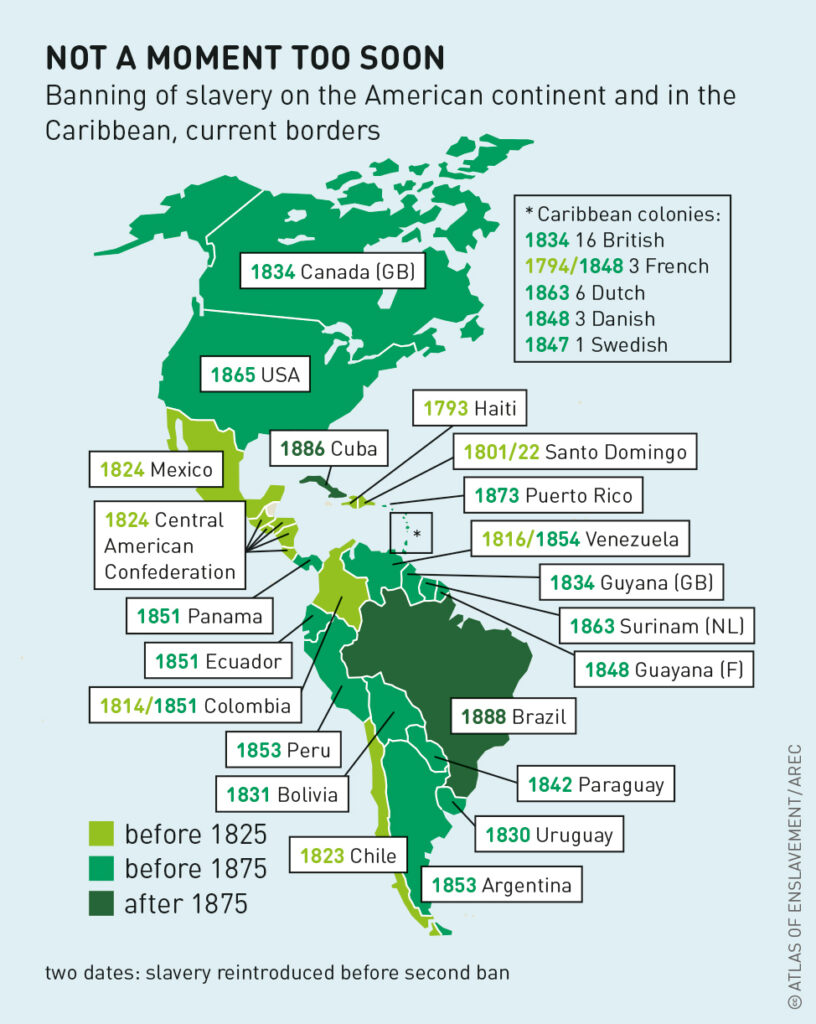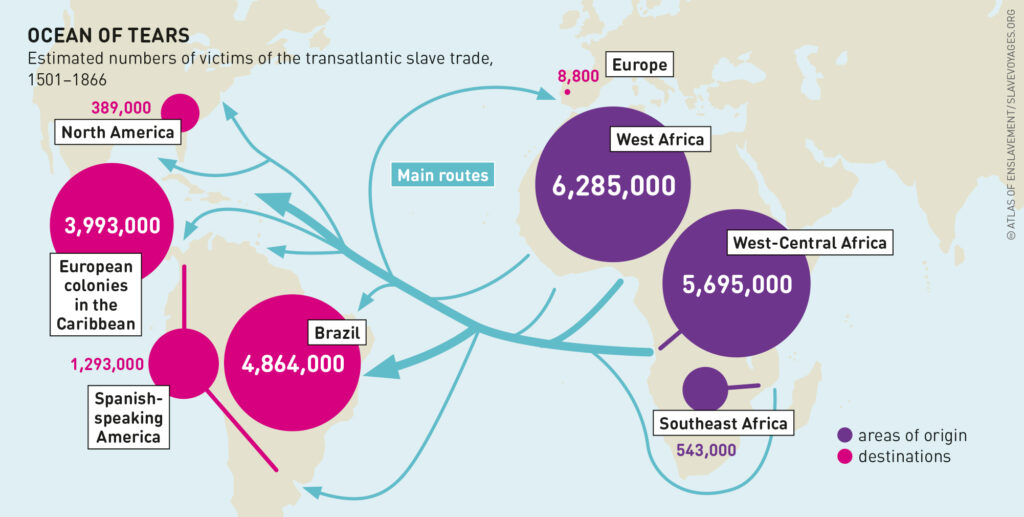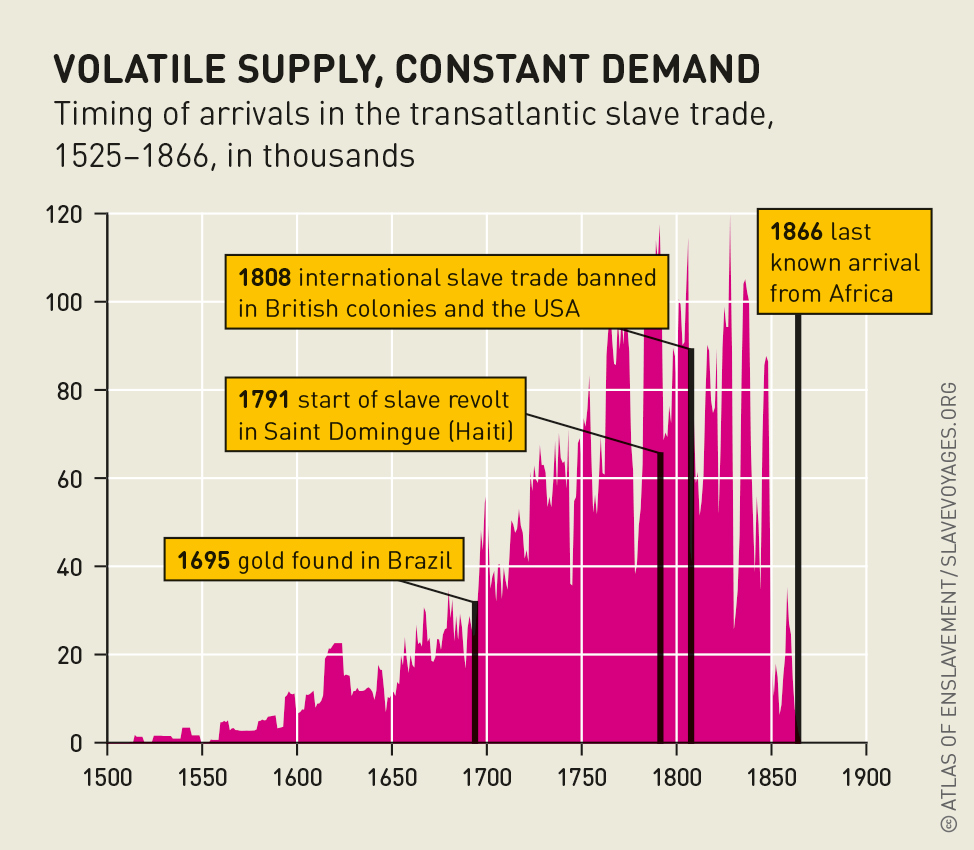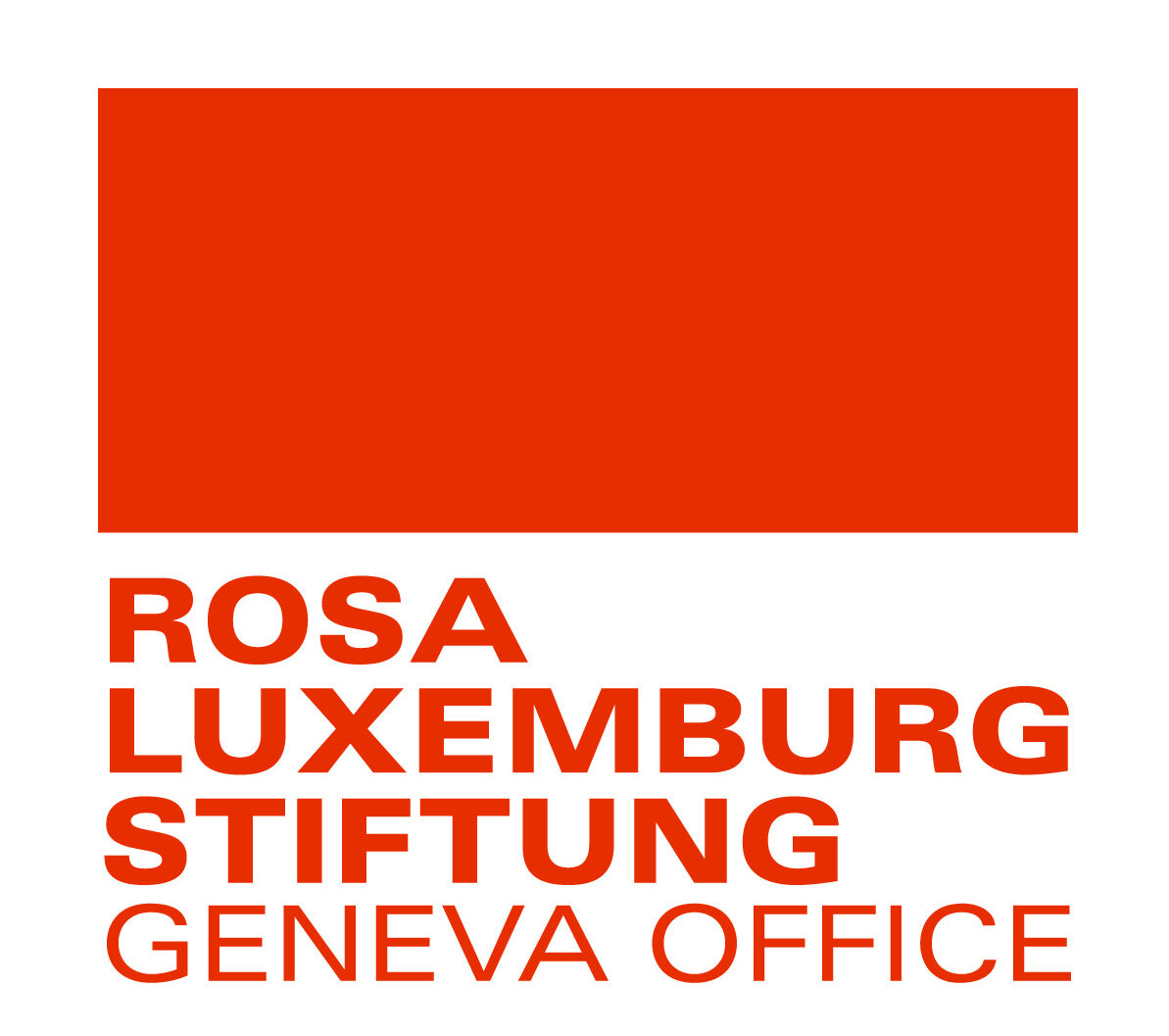The European colonization of the Americas was a disaster both for the indigenous population and for many Africans. The indigenous people were forced to work in mines and plantations, where huge numbers died from overwork and imported diseases. The colonialists replaced them with slaves captured in Africa. Despite repression, those who were exploited continued to resist.
Slavery – or conditions similar to it – existed in Latin America and the Caribbean before the arrival of the first Europeans. The Aztecs practised it, as did the Incas and several Caribbean peoples. Nonetheless, the conditions under which these slaves lived differed markedly from those of the Black Africans that the Europeans later brought to the Caribbean and the Latin American continent. Among the Aztecs, slaves who were mistreated had to be set free. Those who worked well were often released or could buy their freedom. In the Inca empire, unfree people known as Yanacona were similar to migrant workers who did not belong to a particular village community, so had to serve as serfs without the community’s protection. In the Caribbean islands, slaves were regarded as personal servants to their masters; they were often released after a few years. Their numbers were small.

The mass enslavement of people in these regions started with the arrival of the Spanish. The conquistador Hernán Cortés, who arrived in what is now Mexico in 1519, enslaved tens of thousands of indigenous people within a decade. They died en masse, either from hard labour in the mines or through imported diseases. From 1526 on, the colonialists therefore imported over half a million slaves from today’s Honduras and Nicaragua. In the former Inca Empire, too, indigenous slaves were maltreated to death. The Uruguayan author Eduardo Galeano estimates that eight million forced labourers there died in gold and silver mines. The indigenous Taino population of Hispaniola, the island today divided between Haiti and the Dominican Republic, was once estimated at between 500,000 and a million people. Only 50 years after the arrival of Columbus in 1492, it had shrunk to just a few hundred as a result of forced labour and imported diseases.
Because of the shortage of labour that resulted from these deaths, the Spanish began the mass import of Black slaves from Africa in 1580. Four years previously, Portugal had founded Luanda, in what is now Angola, the first big port for exporting slaves. Over the next three centuries, almost six million Africans were trafficked to the Americas – nearly half the continent’s total of 12.5 million people. The biggest slave traders were Portugal (5.85 million abducted), Great Britain (3.25 million), France (1.4 million) and Spain (just over 1 million). The largest number of slaves came from Angola, the Congo basin and West Africa, plus over half a million from what is now Mozambique and Madagascar. The main destinations were Brazil (4.8 million), Jamaica (1 million) and Cuba (779,000).
One example: 774,000 slaves were transported to the French colony of Saint-Domingue, in the territory of what is now Haiti. At the end of the 18th century, there were 15 black slaves for every white settler in Saint-Domingue. They survived an average of just seven years. Their numbers, calculated from historical registers, must be regarded as an underestimate. Because the import of slaves was subject to tax, the official imports were accompanied by a difficult-to-estimate number of smuggled people.

The slaves were put to work in mines, on plantations growing sugarcane, coffee, cotton and indigo, as artisans, or as domestic servants. The slightest transgressions were punished harshly. The most common punishment was a public whipping. Slaves were branded, mutilated, and slowly tortured to death. Despite all this, many resisted their circumstances.
The most common form of resistance was the refusal to work. The workers acted stupid, ate soil to make themselves ill, reopened old wounds, or mutilated themselves. From the start, individuals or whole groups escaped, settled in inaccessible areas and established settlements. Many of these escapees attacked plantations and freed further slaves. They were known as Cimarrones, the Spanish word for feral domestic animals, or, in English, “maroons”.
In the jungles of northeastern Brazil, escaped slaves founded the state of Palmares, covering about 6,000 square kilometres, in which tens of thousands of escapees lived. It resisted attacks by colonial armies for a hundred years until it was destroyed in 1694. After a long period of war, Great Britain was forced to conclude peace treaties with two large groups of maroons in Jamaica, granting them autonomous territories that have persisted to this day.
Right from the start, there were large and small slave revolts. The only one that was successful was that in Saint-Domingue. From 1794 to 1804, the enslaved Black people there fought a bloody war against France, resulting in their independence as the Republic of Haiti. The fact that slavery was abolished throughout Latin America and the Caribbean in the following decades was due less to humanitarian concerns than to the realization that free workers were now cheaper than the purchase and maintenance of slaves. The last country to free its slaves was Brazil, which emancipated nearly a million people in 1888.

When slavery was abolished, the slave owners were usually compensated. France, for example, used the threat of war to extort independent Haiti of 90 million gold francs – worth more than 20 billion euros today. The slaves, on the other hand, were not compensated anywhere. Demands to do so were not made until the start of the 21st century. CARICOM, for example, adopted a programme in 2014 demanding comprehensive compensation for the descendants of slaves by the slaveholding nations, and the cancellation of international debts for countries that had suffered under slavery and colonialism.
